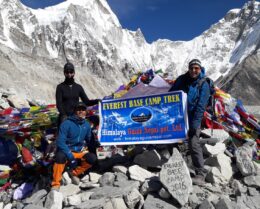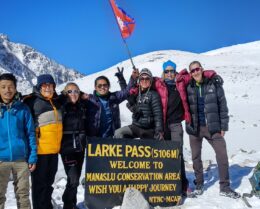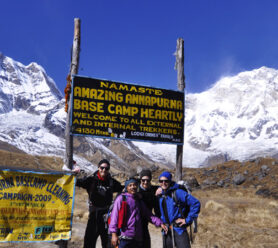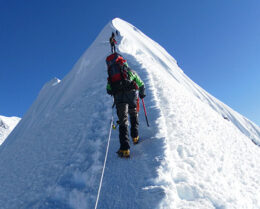Places to see
Kathmandu Durbar Squire.
Places to see are best well-known as Kathmandu Durbar Square lies the heart of the city. And locally called Hanuman Dhoka Palace Square very old seat of the Nepalese Royalty. But it has listed eight Cultural World Heritage sites by UNESCO. This palace complex consists of a variety of temples dedicated to different Hindu gods and goddesses. Kathmandu Durbar Square is a cluster of ancient temples, palaces, courtyards, streets, and most the building. We can see the date of the 15th to 18th centuries. Because it is a social, religious, and urban focal point of the Capital City.
Taleju Temple is the tallest and all structures build in 1549AD by King Mahendra Malla. Kal Bhairav IS one of the largest stone idols in Kathmandu representing the terrifying aspects of Shiva. Jaganath Temple is a fascinating erotic figure carving the wooden struts eaves. Jaganath Temple was built in the 16th decade. Kasthamandap is standing at the southwest corner of the Square and was built from a single Sal tree. Kumari Ghar House of living goddess, 17th decade Kumari Temple is an example of highly developed Nepalese temple craft. Museum and many more places to visit around there.
Swayambhunath or Monkey Temple:
This is the place from where we view of Kathmandu valley perfectly. And also known as Monkey Temple. The 3000-year-old Buddhist stupa or chaitya is 3km to the west of Kathmandu. But it lies on a sacred hillock 75mtrs above the valley. The main structure of the stupa consists of a solid hemisphere of brick supporting a conical spire. Which is surmounted by a pinnacle of gilded copper? The four-sided spire is painted with the all-seeing eyes of Lord Buddha.
Patan Durbar Square:
Patan is like Lalitpur district's oldest town in the Lalitpur Valley. The local people call it Lalit Pura, ‘the beautiful city’. Patan is about 5km south of the capital city of Nepal. And it is the second-largest city in the valley. The city stands on the raised ground across the river Bagmati from Kathmandu. It built during the region of King Vira Deva in 298AD and known for its ancient Buddhist shrines, stupas and temples. In recent times it has also become famous for the excellent handicraft items and other souvenirs.
Golden Temple:
This temple knew as Hiranya Varna Mahavihar. Which is built by King Bhaskar Verma in the 12th decade? The three-storied golden pagoda-style the golden image of Lord Buddha which is placed on a pedestal in the upper part of the vihara. There is also a huge prayer wheel in the pagoda. The walls of the temple are decorated with intricate designs.
Rudra Varna Mahavihar:
This Buddhist monastery has a huge image of Lord Buddha beside several other artistic statuses.
The Kumbhkeshwar Temple:
This temple built by King Jayasthiti Malla in 1392 AD; this is the oldest surviving temple in Patan. It is one of the 3 major temples that have five-tiered roofs. This Shiva temple has been thronged with pilgrims during the Janai Purnima festival in July-August. In the center of the temple tank, there is a small shrine that has a beautiful gold and silver lingam.
Krishna Mandir:
The Krishan Mandir is known as the stone temple because made of stone, which was built by King Siddi Narasingh Malla in the 16th century. The temple shows the influences of Mughal architecture. It lies opposite the palace. The temple is in the form of a Shikara style. There are scenes from the Mahabaratha and Ramayana adorning the walls of this temple.
Jagat Narayan Temple:
This red-brick temple is dedicated to Lord Vishnu and situated at the confluence of the Bagmati and Manahara rivers. The temple was renowned for its stone images as well as n imposing metal statue of a Garuda atop a stone monolith.
Asoka Stupa:
Asok Stupa built in 250BC by Emperor Asoka when he had visited Patan. This is one of the four stupas built.
Patan Museum:
The section of the palace around Keshav Narayan Chowk the former residence of the Malla King has been superbly renovated. And houses one of the subcontinent's finest Museums. The museum's main attraction is an outstanding collection of cast-bronze and gilt copper work, mostly of Hindu and Buddhist deities. One gallery shows the stage involved in hammered sheet metal relief design production.
The Palace Complex:
This palace was built by the Mallas during the different periods of their rule. The palaces consist of three main chowks of the courtyard. The Mul Chowk or the central courtyard was constructed in 1666 AD for Srinivasa Malla and is the oldest. This two-story palace was the residence of the Patan royal family. Two stone lions stand guard at the entrance. The Bidya Mandir, a small gilded shrine is located within the complex.
Rato Machhindra Nath Temple:
It is a three-storeyed pagoda of the early 16th century. It stands in the middle of a square grassy courtyard. The red Machhendranath is an expression of God Lokeshwara or Shiva. Every year the god is taken out in a procession during the month of May. But which lies 5 km from Pata. Here is Machhendra`s second residence, where the god stays every sixth month of the year and our many others too, for sightseeing.
Pashupatinath Temple:
This is the oldest Hindu temple. And dedicated to Lord Shiva. It is situated on the sacred river Bagmati. It is built in the form of a two-tiered gilded pagoda with huge silver doors that are richly carved. There are some erotic paintings on the walls. Only Hindus are permitted to enter the main temple, one of the sacred temples. Tourists can see this temple from the eastern side of the river. There is the Bagmati River beside that river everyday death bodies burn to own their place I mean there are different Hindu people rank.
Bauddhanath Stupa:
This octagonal based stupa inset with prayer wheels is the largest of its kind in the world. And it has four pairs of eyes in the four directions that keep watching for righteous behavior. This is 6km from the touristy area Thamel. The side streets are full of maroon-robed monks, gleaming monastery roofs and shop fronts full of monks.
Bhaktapur Durbar Squire:
It is 12km from Kathmandu. But it is called Badgaon. It is an ancient Newari city and also a Royal Malla town. The city is in the shape of a conch. And situated at an altitude of 1402m. This was built during the 9th century by King Ananda Malla. Traditional occupations besides agriculture are pottery and weaving. Like the other cities in the Kathmandu Valley, Bhaktapur also has its Durbar Squire at the heart of the city. The architectural grandeur of the Newari is best visible in the building around the Durbar Squire which also has more than a dozen temples.
Chagu Narayan Temple:
This Temple built around 330 AD. It believed to be the oldest pagoda-style temple in the Kathmandu valley. The temple has excellent sculptures and carvings. From here one can see the beautiful countryside
Lumbini:
Places to see Lumbini are the birthplace of Lord Buddha and are just 10km from the Indo-Nepal border. In ancient times, Lumbini was a royal park in Sakya territory. It is situated on the banks of river Rohini between Kapilavastu and Devadaha. The birth of the Gautam Buddha in Lumbini makes it one of the most sacred places in the world. Year after Mayadevi gave birth to Siddhartha; the Buddha once visited Lumbini on his way to Devadaha and preached the Devdaha Sutta there. The Sal trees forest where Siddhartha was born. But Asoka, in the 21st year of his region, visited the forest. And pillar on the spot where Siddhartha was born. Where are The Asoka Pillar, The Mayadevi Temple, The modern Buddhist Vihar, and many other places to see around the area?




